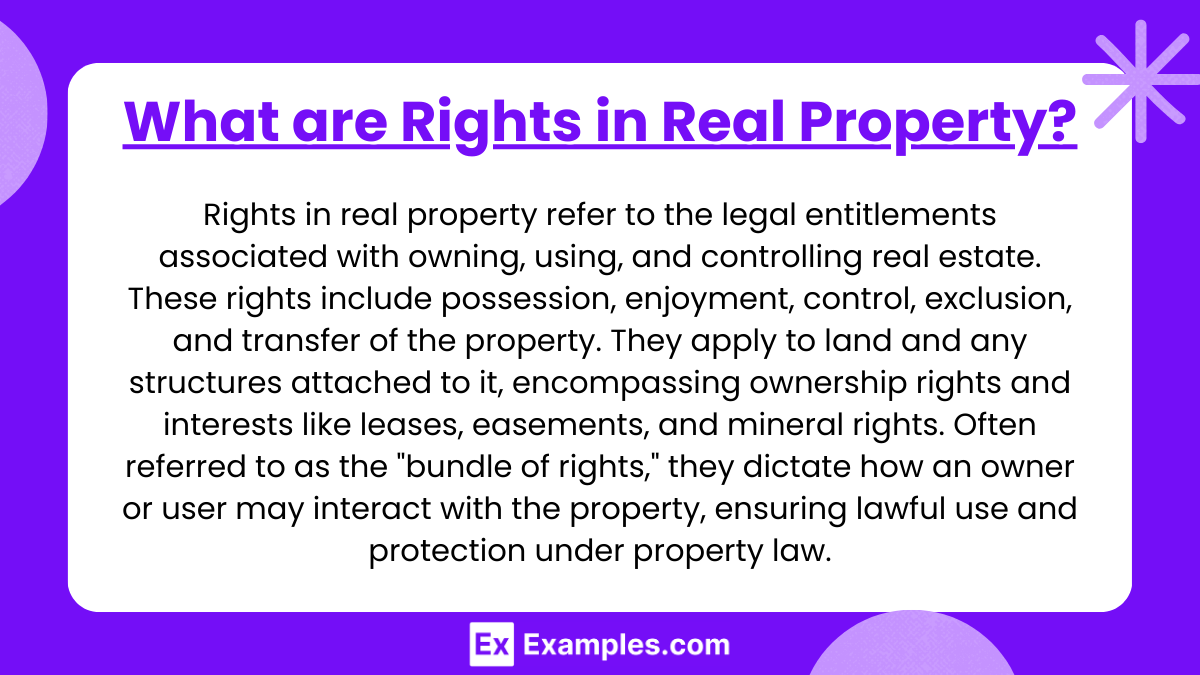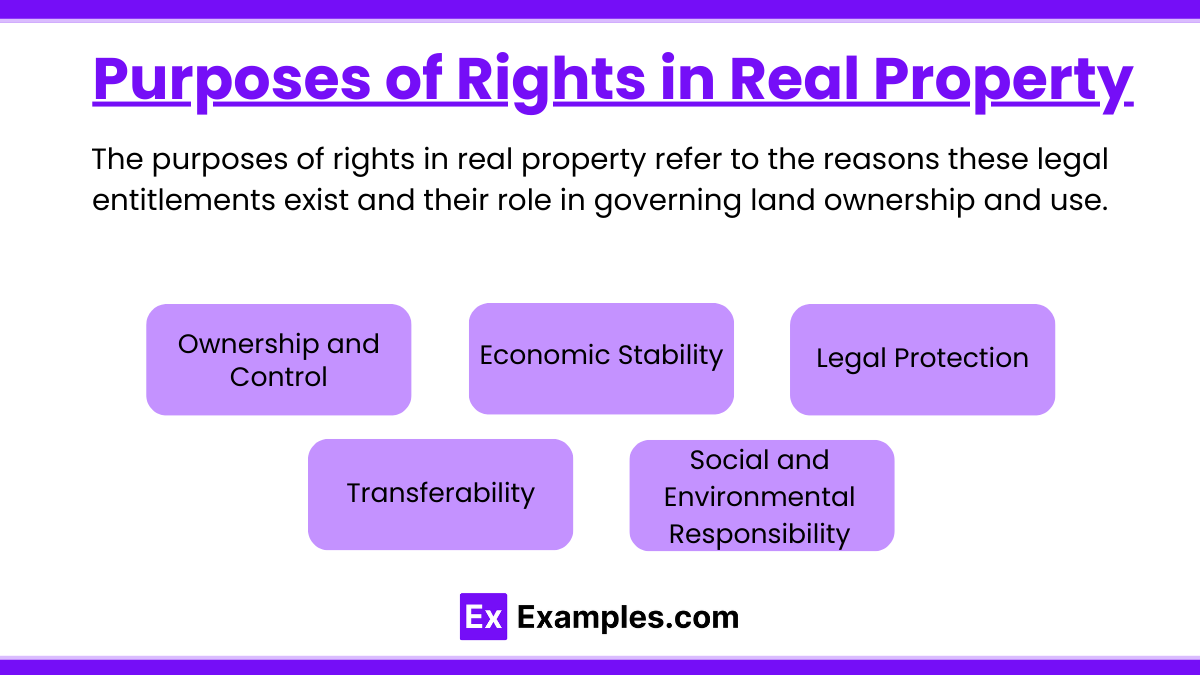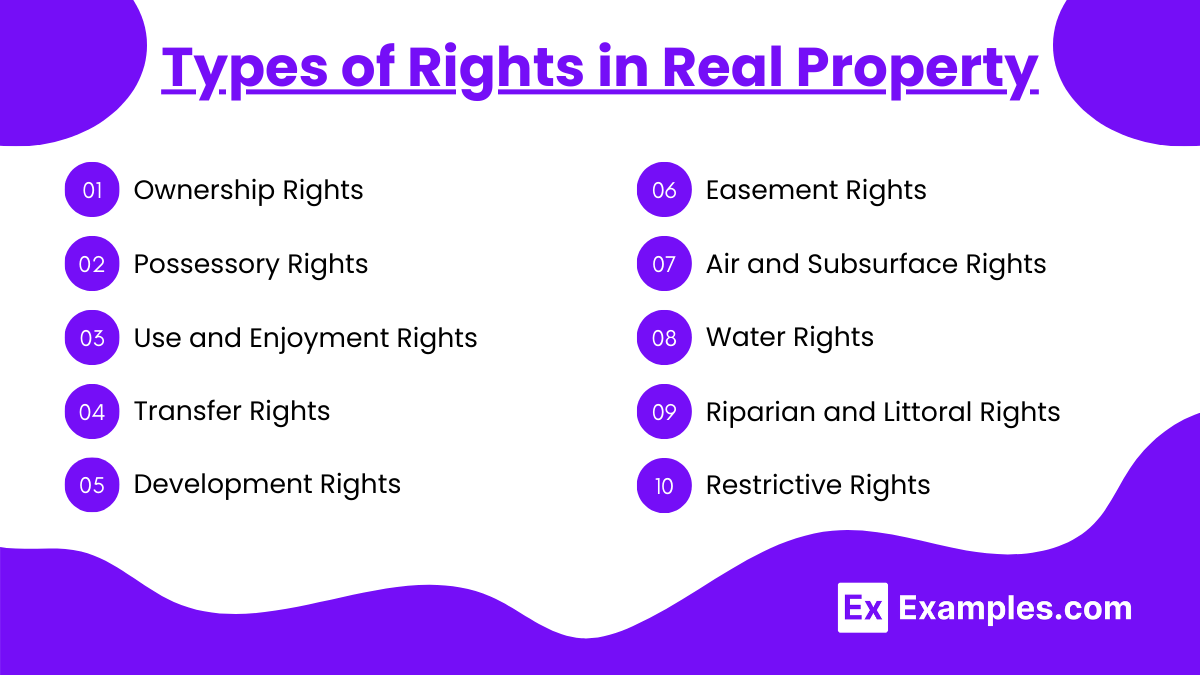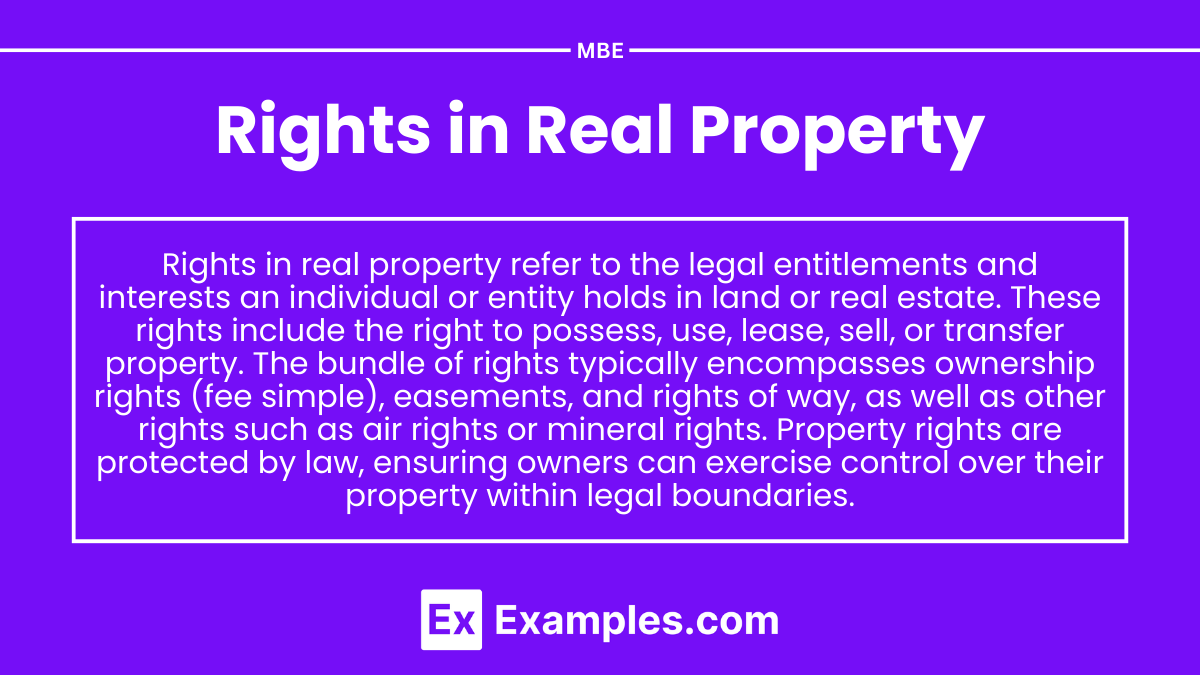Preparing for the MBE Exam requires a solid understanding of “Rights in Real Property,” covering the core concepts of property law. This involves grasping the various types of rights, such as fee simple, life estates, and easements, as well as understanding the associated legal concepts like possession, transfer, and concurrent ownership. Proficiency in applying the rules of property conveyances, such as deeds and wills, and the ability to distinguish between different possessory and non-possessory interests is crucial for navigating complex property law scenarios effectively.
Learning Objectives
In studying Rights in Real Property for the MBE Exam, you should learn to understand its critical role in property law and its application to fact patterns. Rights in real property encompass various types of ownership interests, such as fee simple, life estates, and easements, each with distinct rules and characteristics. Understanding the concepts of concurrent ownership, transfer of interests, and the legal doctrines governing property conveyances is essential. Mastery of property law ensures accurate issue-spotting, refined reasoning, and strong performance, which are critical for success in the MBE Exam.
What are Rights in Real Property?

Rights in real property refer to the legal entitlements associated with owning, using, and controlling real estate. These rights include possession, enjoyment, control, exclusion, and transfer of the property. They apply to land and any structures attached to it, encompassing ownership rights and interests like leases, easements, and mineral rights. Often referred to as the “bundle of rights,” they dictate how an owner or user may interact with the property, ensuring lawful use and protection under property law.
Purposes of Rights in Real Property

The purposes of rights in real property refer to the reasons these legal entitlements exist and their role in governing land ownership and use. These purposes include:
- Ownership and Control: To grant individuals or entities legal authority over land or buildings, enabling them to control and use the property according to their needs.
- Economic Stability: To establish a secure foundation for economic activities, such as agriculture, business, or real estate development, ensuring that property owners can invest with confidence.
- Legal Protection: To safeguard owners and occupants against unauthorized use, trespass, or encroachments, maintaining peace and order in property-related disputes.
- Transferability: To allow for the buying, selling, leasing, or transferring of property, promoting flexibility in property transactions and ensuring market fluidity.
- Social and Environmental Responsibility: To balance individual rights with community interests, ensuring the responsible use of land while preserving environmental sustainability and public welfare.
Types of Rights in Real Property

Real property encompasses a variety of rights that an owner or entity may hold. These rights are typically categorized as follows:
1. Ownership Rights
Ownership rights represent the complete control of a property. They include the right to possess, use, transfer, or lease the property. Owners with full ownership rights hold what is known as “fee simple” ownership, which is the most comprehensive form of property ownership.
2. Possessory Rights
Possessory rights grant the holder the ability to occupy and use the property. This category includes tenancy rights for renters and leasehold estates, where the occupant has specific rights for a defined period.
3. Use and Enjoyment Rights
These rights allow individuals to use the property for their intended purposes, such as residential living, commercial activities, or agricultural use. Use and enjoyment rights are often subject to local zoning laws and restrictions.
4. Transfer Rights
Transfer rights enable the property owner to sell, gift, or bequeath the property to others. These rights also include the ability to mortgage or encumber the property as collateral for loans.
5. Development Rights
Development rights pertain to the ability to improve or modify the property, such as constructing buildings or making land alterations. These rights are subject to zoning regulations, building codes, and environmental laws.
6. Easement Rights
Easement rights allow a third party to use a portion of the property for a specific purpose, such as utility access, roadways, or shared driveways. These rights do not grant ownership but provide limited access for defined activities.
7. Air and Subsurface Rights
Air rights involve the ownership and control of the space above the property, while subsurface rights pertain to the resources beneath the ground, such as minerals, oil, or water. These rights can be sold or leased separately from the surface rights.
8. Water Rights
Water rights regulate the access and use of water sources on or adjacent to the property. These rights are particularly important for properties near rivers, lakes, or other bodies of water and vary based on regional laws.
9. Riparian and Littoral Rights
Riparian rights apply to properties bordering rivers or streams, while littoral rights pertain to properties near oceans or lakes. These rights govern access to and use of these water bodies.
10. Restrictive Rights
Restrictive rights are limitations placed on property use, often through zoning ordinances, homeowner association rules, or deed restrictions. They are designed to ensure proper use and maintain community standards.
Examples
Example 1. Ownership Rights in Residential Property
A homeowner exercises their rights in real property by modifying their home through renovations, such as adding a second story or installing a swimming pool. These changes, which fall under the “right to control,” are made possible because the individual owns the property and has the legal authority to decide how it is used within zoning laws and regulations.
Example 2. Leasing Property to Tenants
A landlord utilizes their rights in real property by leasing an apartment to tenants. This scenario highlights the “right to lease,” allowing the property owner to generate income while granting temporary possession and use of the property to others under a rental agreement, as stipulated in the lease terms.
Example 3. Easement Rights for Access
A property owner might grant an easement to a neighboring landowner, allowing them to cross their land for easier access to a public road. This reflects the “right to grant easements,” where the property owner retains ownership but permits limited use of the property by others for specific purposes.
Example 4. Selling Property for Financial Gain
A real estate investor exercises their “right to sell” by putting their property on the market. They may sell a piece of land or a commercial building to capitalize on rising market values, transferring ownership and associated rights to the buyer in exchange for financial compensation.
Example 5. Restricting Access to Private Land
A farmer may enforce their “right to exclude” by placing fences around their farmland and putting up signs to deter trespassers. This ensures the property is used solely for farming activities, protecting the owner’s interests and controlling access to their land.
Practice Questions
Question 1
Which of the following is considered a “bundle of rights” in real property ownership?
A. Right to vote in local elections
B. Right to exclude others
C. Right to access public services
D. Right to dictate neighbors’ property use
Correct Answer: B. Right to exclude others
Explanation:
The “bundle of rights” associated with real property ownership typically includes several rights, such as the right to use the property, the right to sell it, the right to lease it, the right to exclude others from it, and the right to enjoy it. The right to exclude others is a fundamental part of property ownership, as it allows the owner to maintain control over who can access their property. Rights like voting in local elections or accessing public services are not directly tied to property ownership.
Question 2
What is an easement in the context of real property?
A. The right to sell property
B. The right to restrict development on neighboring land
C. The right of a third party to use part of someone else’s property
D. The right to increase the value of property through improvements
Correct Answer: C. The right of a third party to use part of someone else’s property
Explanation:
An easement is a legal right that allows someone other than the property owner to use part of the property for a specific purpose. Common examples include utility easements (allowing utility companies to place wires or pipes) and access easements (allowing a neighbor to cross through a property). Easements do not transfer ownership but grant limited use. This distinguishes them from rights like selling property or making improvements, which are typically part of ownership rights.
Question 3
Which type of estate provides the most complete set of ownership rights in real property?
A. Life Estate
B. Fee Simple Absolute
C. Leasehold Estate
D. Easement
Correct Answer: B. Fee Simple Absolute
Explanation:
A Fee Simple Absolute is the most comprehensive type of ownership in real property. It grants the owner unlimited rights to use, sell, or bequeath the property, subject only to legal restrictions like zoning laws. A Life Estate provides ownership for the duration of a person’s life but terminates afterward. Leasehold Estates only grant possession and use for a specified period, while easements are limited rights for non-owners. Fee Simple Absolute provides the highest degree of control and permanence in ownership.


